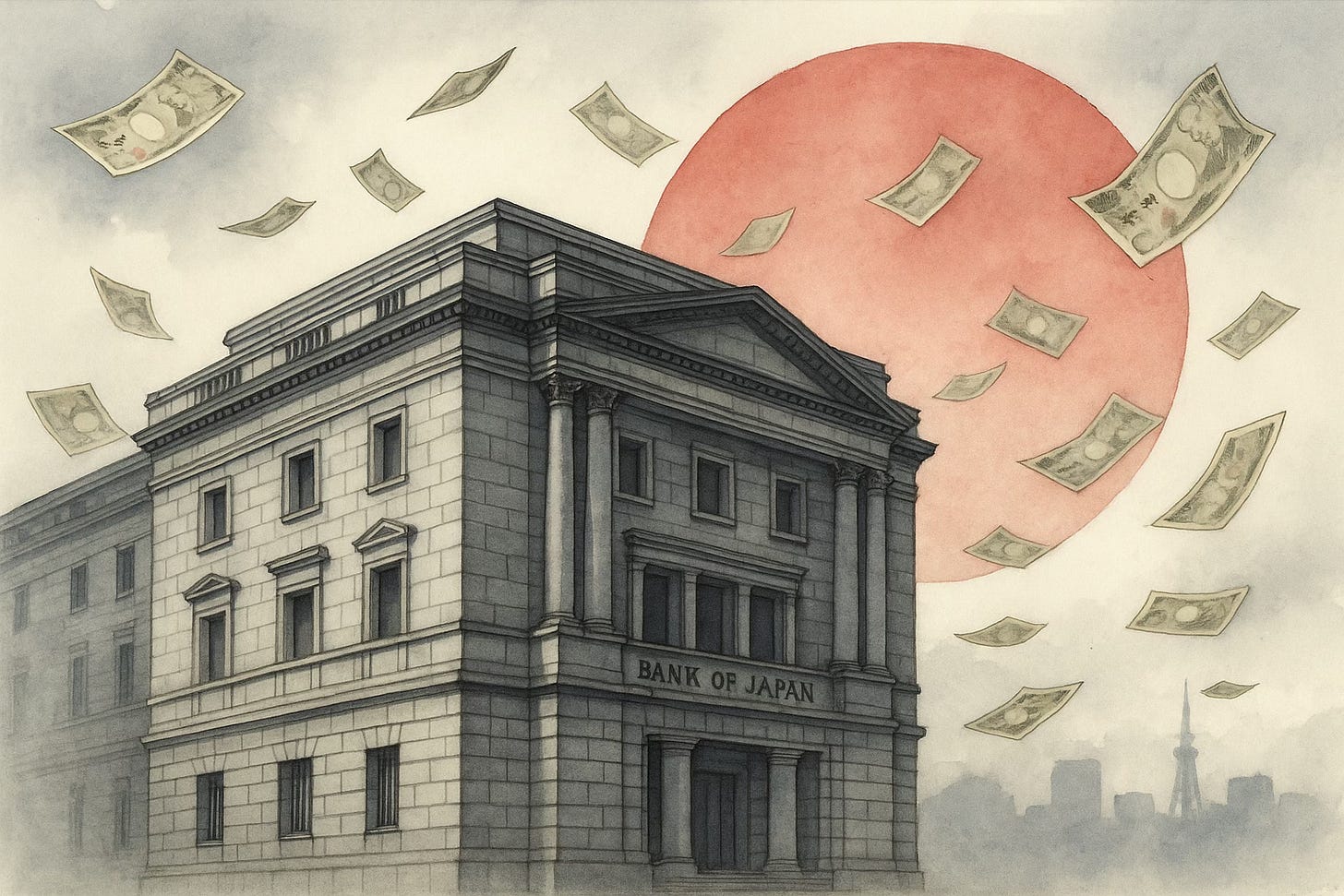Japan’s Faith-Based Economics
When politics demands miracles, central banks become heretics.
Tokyo just chose stimulus, and the market didn’t wait for parliament to catch up. The yen slipped, long JGBs got smoked, and stocks ripped to records. Investors saw a government that wants to spend, a central bank that will tolerate it, and they voted with real money.
Picture the desks at the open. USD/JPY pops through 150, traders clock the euro cross hitting a record, the Nikkei flashes +4.8% and closes on fresh highs. On the rates screens, the long end buckles while the 2-year drifts lower, a classic steepener when deficits rise and hikes get punted. It felt less like a relief rally and more like a regime test.
“Lifting interest rates would be stupid.”
Takaichi said it last year. The wording softened this week, the signal did not.
Abenomics 2.0 is a big, targeted checkbook for Crisis Management Investment: AI, chips, defense, biotech, plus near-term sweeteners like cash handouts and tax breaks. Exporters and state-aligned industrials win first. Households later. Bondholders last.
Numbers & facts:
• Yen down about 1.8%, dollar through ¥150, euro at a record against JPY.
• Nikkei +4.8%, record close.
• 10-year up to 1.68% since 2008, 40-year as high as 3.55%, 2-year near 0.9%.
• Swap odds for an October hike slide to ~24%. Another read shows ~41% by December. Direction matches, windows differ.
The BOJ wanted to taper bond buying into 2026 after scrapping YCC. Takaichi’s fiscal tilt means more long-dated supply just as traditional buyers hesitate. If auctions stumble, the bank either resumes heavy buying, which kills normalization credibility, or lets yields run, which wrecks the budget math. The politics box the central bank either way.
Next up, a 30-year JGB auction near ¥700 billion. The last comparable sale’s bid-to-cover scraped 2.921.
Winners are obvious. Defense, machinery, and tech with a subsidy bullseye on their backs. Mitsubishi Heavy jumped 13%, Sony 9.4%, Toyota 5.2%. Banks lagged because a delayed hiking cycle strangles net interest margins.
SocGen’s take is not dumb. They note Takaichi’s latest line doesn’t promise a blank-check blowout, and the LDP’s minority status could slow the fattest packages. In that world, the BOJ could still hike later, and yen bears could get clipped. Fair.
But markets don’t need a blank check to steepen a curve. They need a direction. We got it. Short yields dipped as hike odds fell. Long yields jumped on supply risk. The repricing hit fast. Banks and insurers are already cautious on duration, so absorption capacity is thin. Add an auction wobble and you are back to balance-sheet support.
FX is the tripwire. The 150 to 152 zone is where the Ministry of Finance tends to show up with a hammer. The street is crowded short yen for carry. One heavy intervention and you get a squeeze into thin liquidity. That is a volatility trap. Hedge it.
There are holes in the public story, and they matter. The size and timing of this Crisis Management Investment aren’t specified in yen terms. Cabinet seats are still shuffling, which will decide who gets the spigot. Even the bond prints vary by window, 3.29% in one cut, 3.55% in another. Rate-hike probabilities differ by horizon, 24% for October versus 41%by December. The direction is consistent. The details are not.
Bottom line: Japan picked spending. The stock rally is a bet on procurement, not a productivity miracle. The yen slide is a bet on a patient BOJ. The JGB selloff is math. None of that is criminal, but it isn’t painless.
If you’re long Japan Inc., enjoy the sugar high. Just keep one eye on the auction calendar and the other on the MoF hotline.


